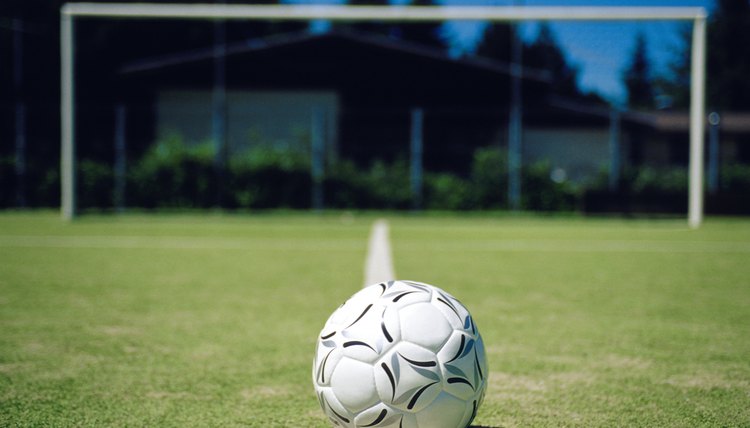Does Dribbling With a Small Soccer Ball Increase Skills Faster?

As soccer grows in popularity, over 24 million Americans participate as of 2014 and the US Youth Soccer registration holding at around 3 million, many players are looking for ways to better their dribbling skills. The golden rule for improvement in any sport is "practice, practice, practice," and soccer is no exception. Ball control is one of the essentials of good dribbling, and practicing with a smaller ball may help you to improve your skills faster.
Identification
Dribbling is basically running with the ball while keeping it close to your feet and under control. If you watch some of the best soccer players in the world, it appears as though the ball is a part of the foot as they maneuver quickly down the field and around their opponents.
A soccer player must be able to dribble with some level of proficiency to play the game, ideally with both the left and right foot. According to the book "Essential Soccer Skills," the easiest way to control the ball is with the inside of your foot, although you should be able to use the outside of your foot when necessary to avoid an opponent.
Size of a Soccer Ball
The size of a soccer ball ranges from 1 to 5; the international standard for ages 12 and up, including all adult and professional play, is a size 5 ball, 27 to 28 inches in circumference. It is recommended that a size 3 ball, 23 to 24 inches, is used for children under the age of 8, and a size 4 -- 25 to 26 inches -- for children aged 8 to 12.
A Coach's Advice
Trevor Dacosta, a high school soccer coach, said the idea behind using a smaller ball is to promote better ball control and that, in theory, practicing with a smaller ball can make you a better dribbler. "A smaller ball increases skills, yes, but not necessarily faster," said Dacosta.
According to Dacosta, the key to improving your skills faster is consistent practice, although he did say that a smaller ball should help a player with foot speed, one of the vital components of good dribbling.
Considerations
Another theory behind the idea of practicing with a smaller ball is that when it is game time and you are using a standard sized ball, dribbling will seem much easier because a smaller ball forces you to make quicker adjustments with your feet.
If you really want to challenge yourself, try controlling a tennis ball with your feet. If you can control a small, bouncy object, a soccer ball should seem almost effortless by comparison.
References
- "Essential Soccer Skills, Key Tips and Techniques to Improve Your Game"; DK Publishing; 2011
- SoccerBallWorld.com: Soccer Ball Sizes and Weights
- Trevor Dacosta, Soccer Coach; Maples Collegiate, Winnipeg, Canada
Writer Bio
Krystal Simpson has been working as a freelance writer since 1998, focusing on topics related to health care. She's written patient materials for various cancer organizations and her articles have appeared in "Our Voice" and "The Navigator." She holds a Master of Arts in journalism from Northeastern University and currently resides in Canada.
